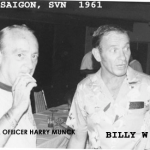Central Intelligence Agency

The Central Intelligence Agency was created on July 26, 1947, when Harry S. Truman signed the National Security Act into law. A major impetus for the creation of the agency was growing tensions with the USSR following the end of World War II.
The success of the British Commandos during World War II prompted U.S. President Franklin D. Roosevelt to authorize the creation of an intelligence service modeled after the British Secret Intelligence Service (MI6), and Special Operations Executive. This led to the creation of the Office of Strategic Services (OSS) established by a Presidential military order issued by President Roosevelt on June 13, 1942. On September 20, 1945, shortly after the end of World War II, Harry S. Truman signed an executive order dissolving the OSS, and by October 1945 its functions had been divided between the Departments of State and War. The division lasted only a few months. The first public mention of the “Central Intelligence Agency” appeared on a command-restructuring proposal presented by Jim Forrestal and Arthur Radford to the U.S. Senate Military Affairs Committee at the end of 1945. Army Intelligence agent Colonel Sidney Mashbir and Commander Ellis M. Zacharias worked together for four months at the direction of Fleet Admiral Joseph Ernest King, and prepared the first draft and implementing directives for the creation of what would become the Central Intelligence Agency. Despite opposition from the military establishment, the United States Department of State and the Federal Bureau of Investigation (FBI), Truman established the National Intelligence Authority in January 1946. Its operational extension was known as the Central Intelligence Group (CIG), which was the direct predecessor of the CIA.
Main articles: CIA Tibetan program, CIA activities in Vietnam, Vietnam War, Phoenix Program, Operation Barrel Roll, CIA activities in Laos, and Laotian Civil War
The OSS Patti mission arrived in Vietnam near the end of World War II, and had significant interaction with the leaders of many Vietnamese factions, including Ho Chi Minh. During the period of U.S. combat involvement in the Vietnam War, there was considerable argument about progress among the Department of Defense under Robert McNamara, the CIA, and, to some extent, the intelligence staff of Military Assistance Command Vietnam. Sometime between 1959 and 1961, the CIA started Project Tiger, a program of dropping South Vietnamese agents into North Vietnam to gather intelligence. These were failures; the Deputy Chief for Project Tiger, Captain Do Van Tien, admitted that he was an agent for Hanoi.


